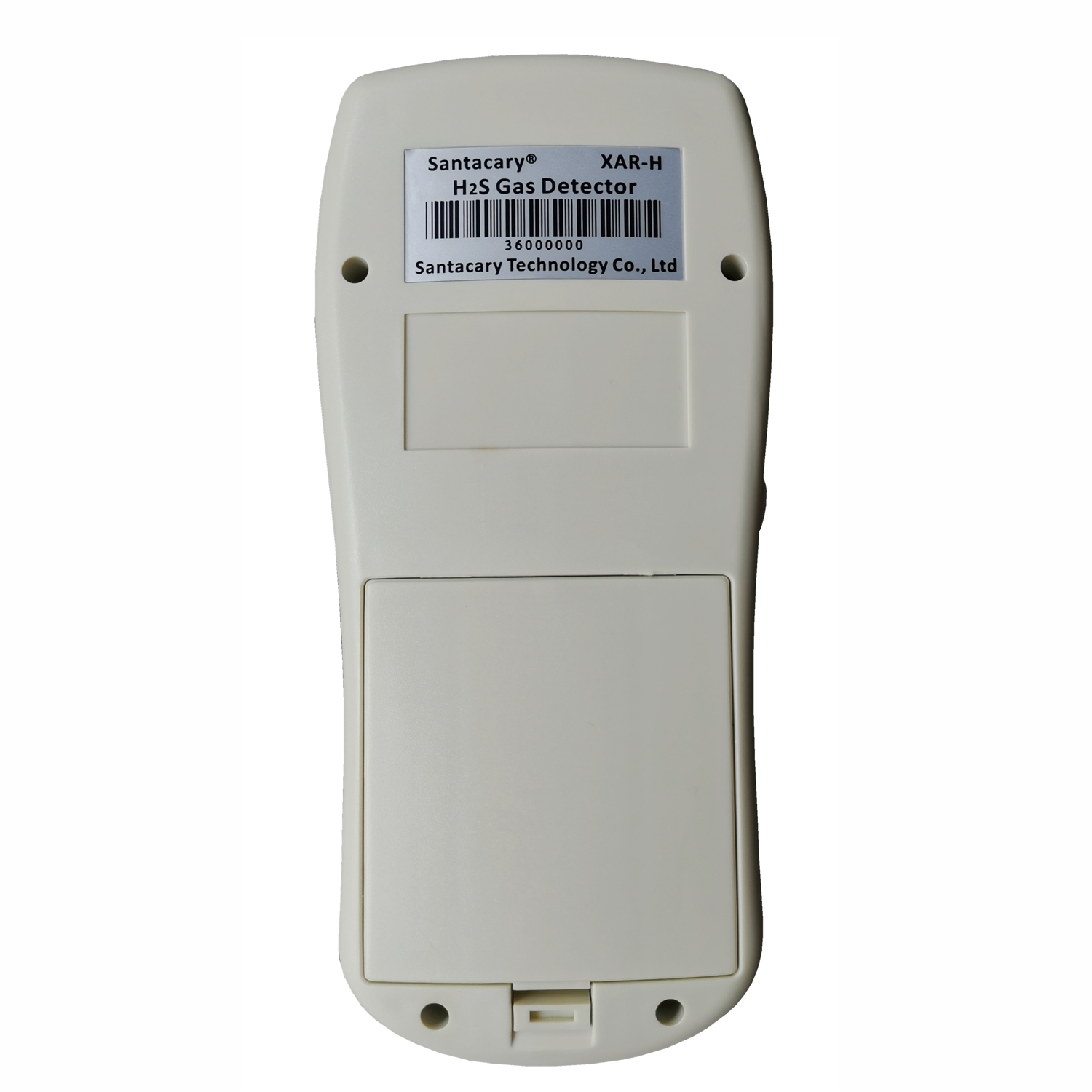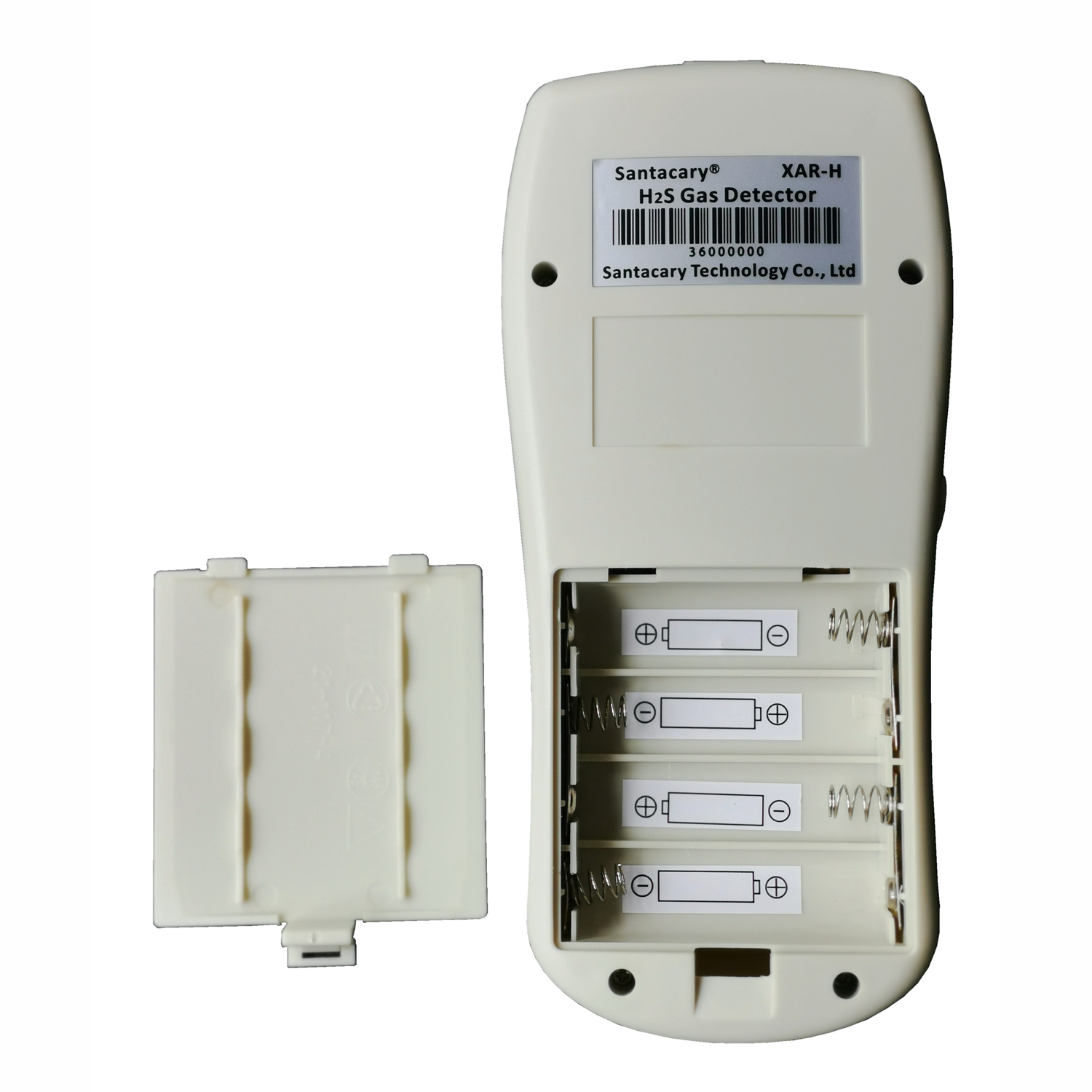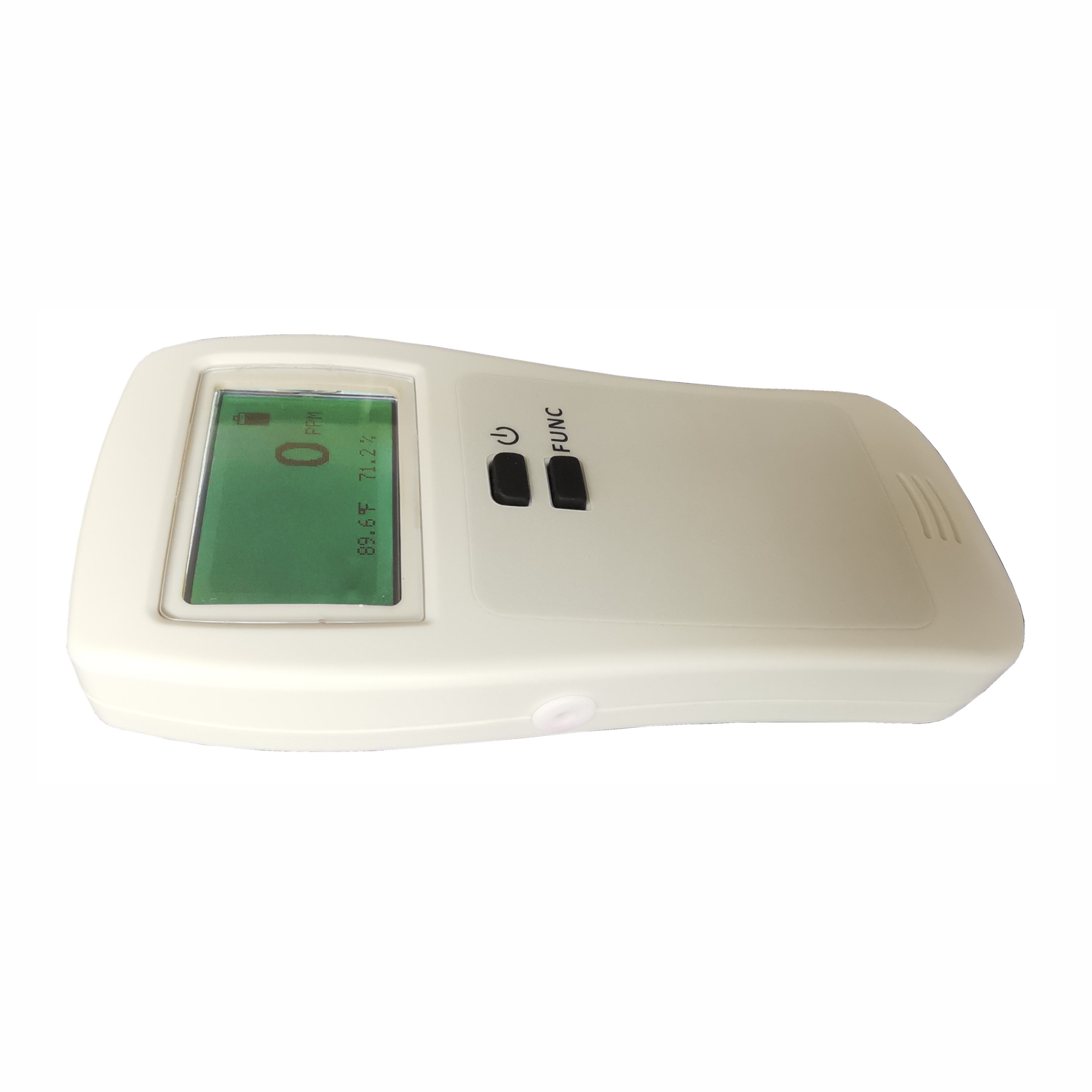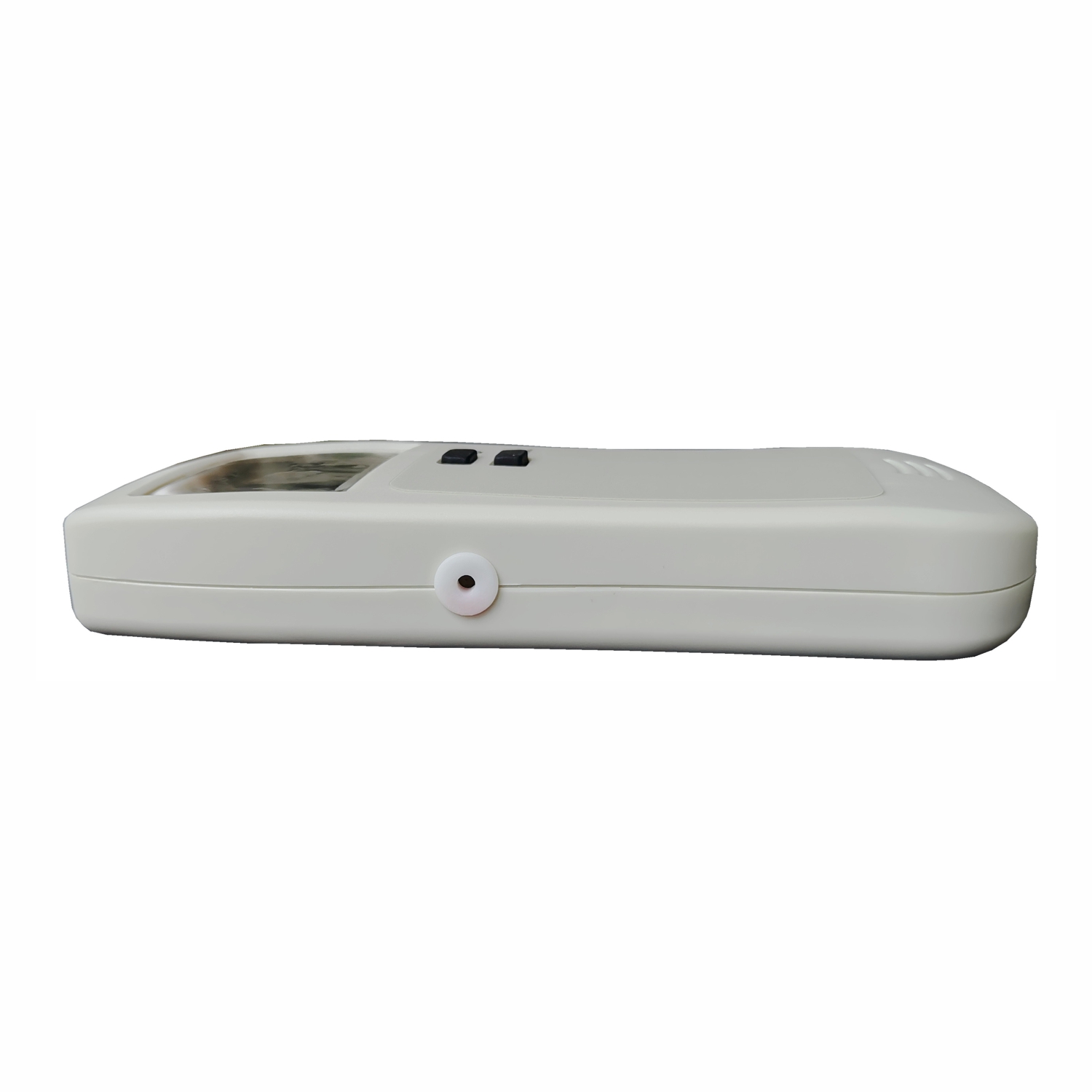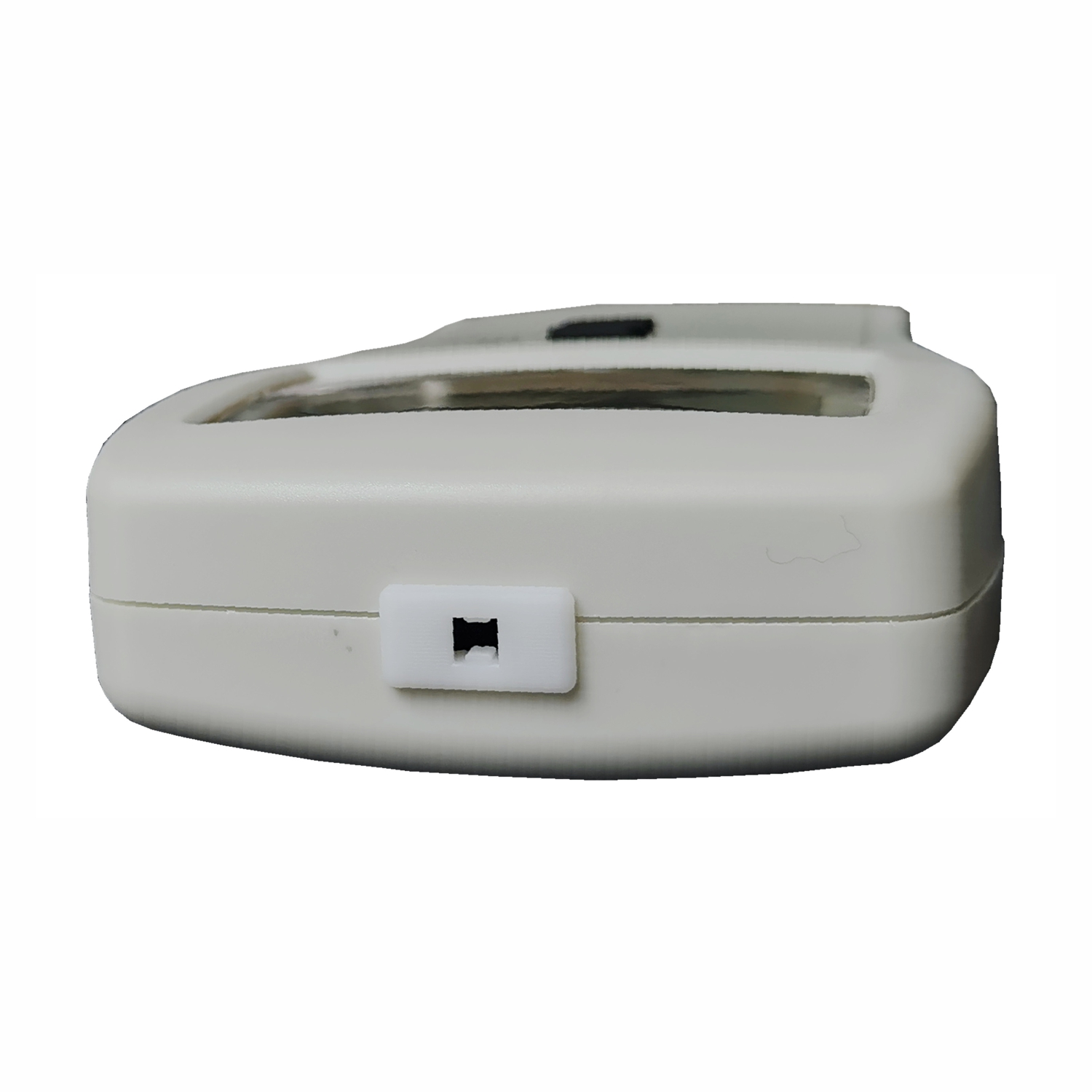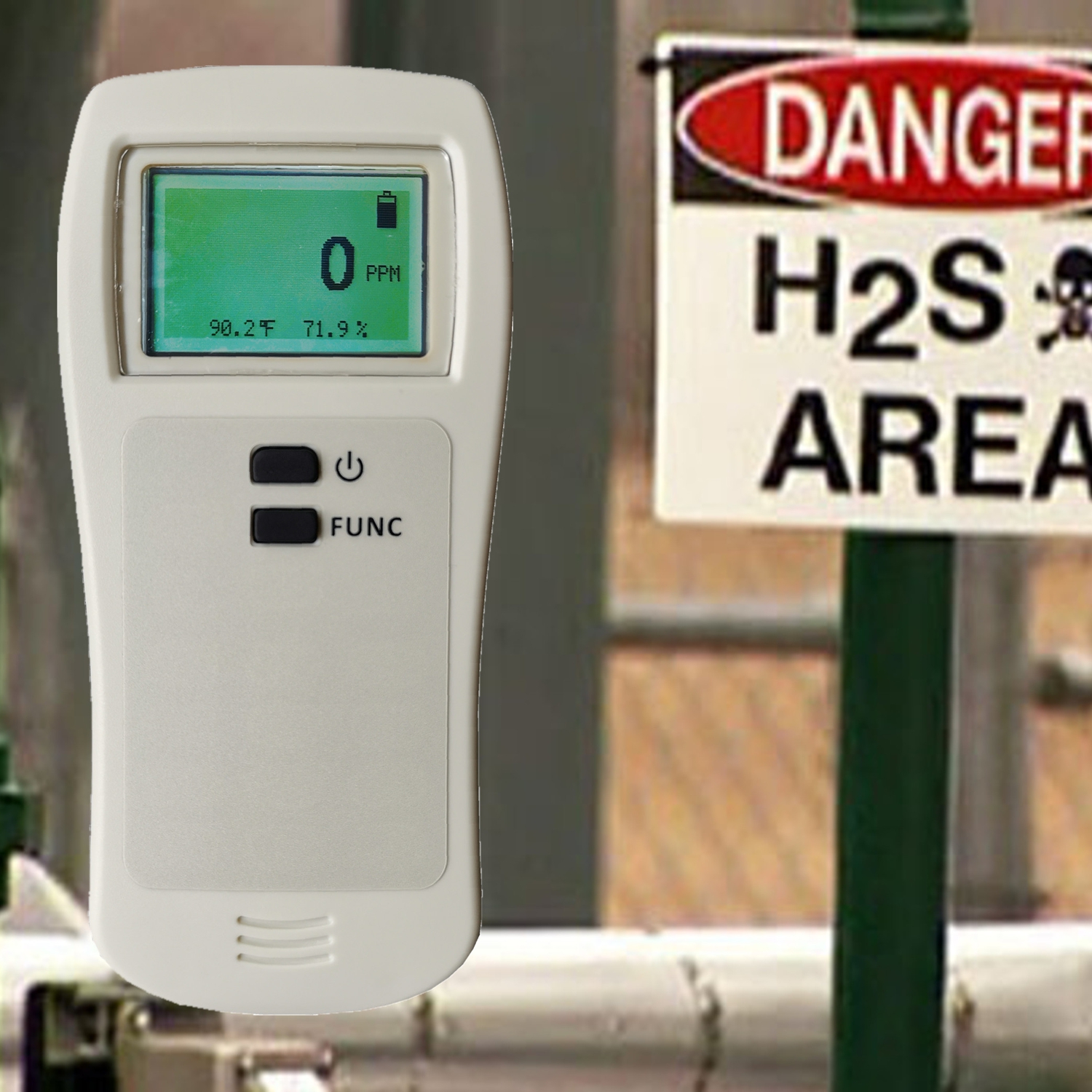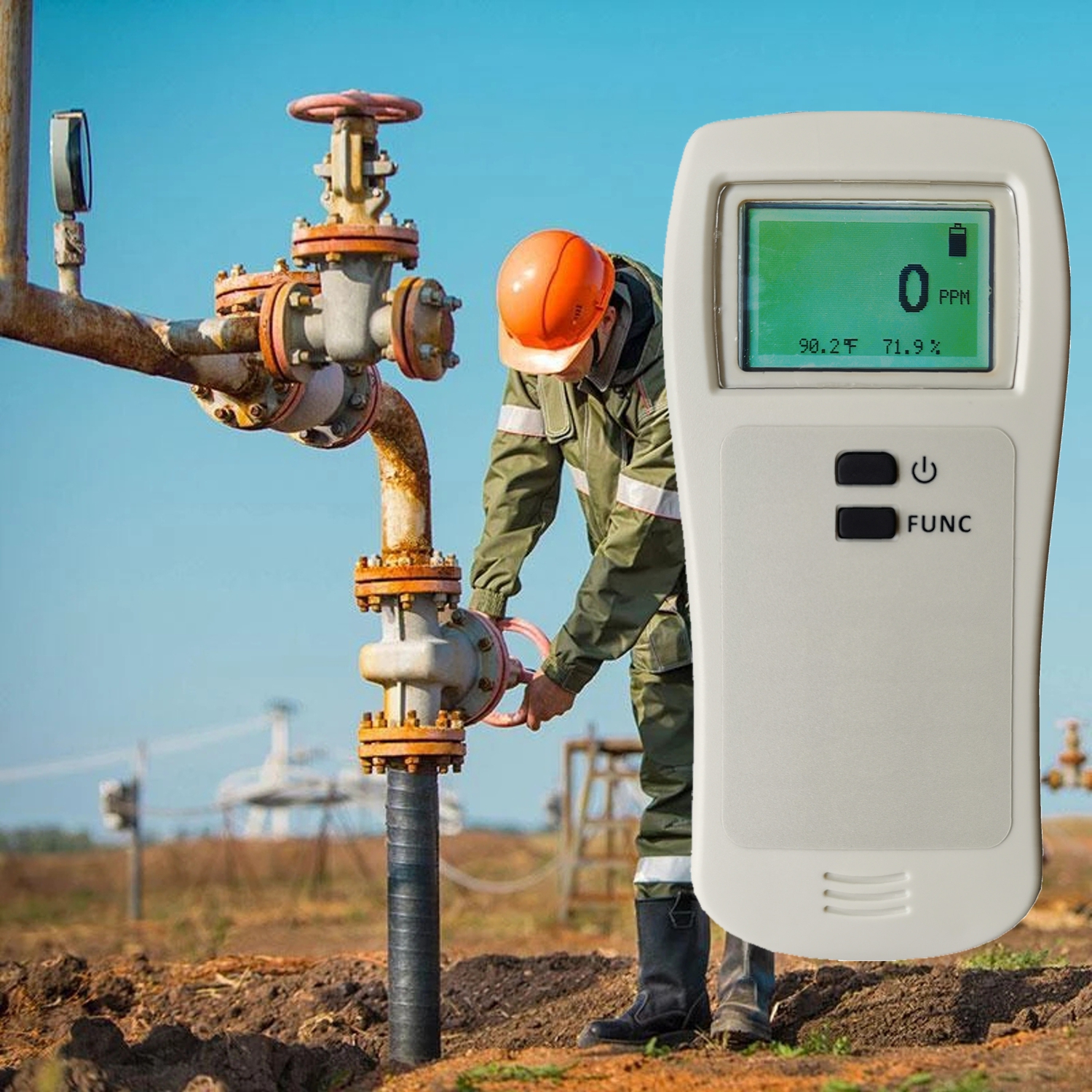XAR-H H2S Gas Detector
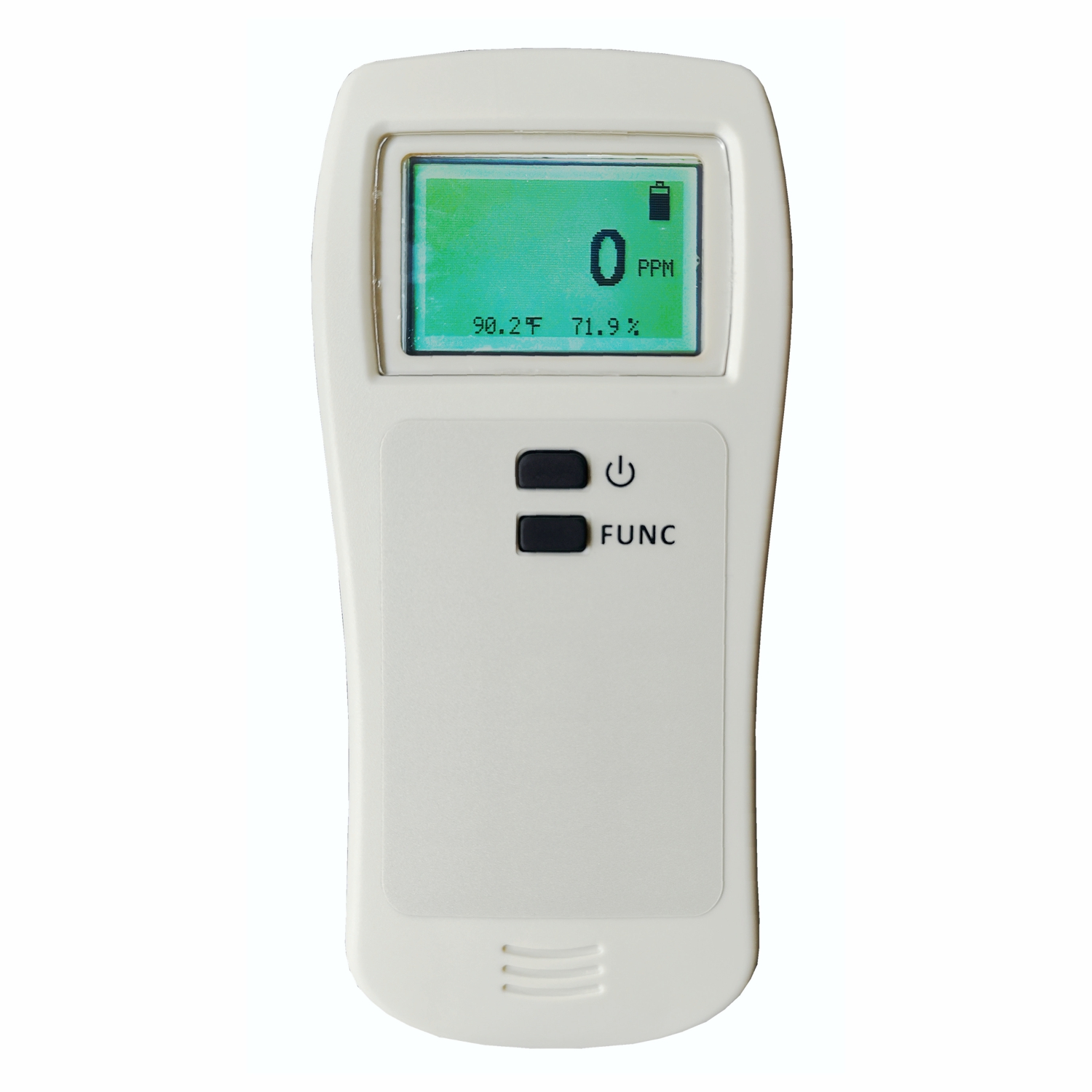
XAR-H H2S Gas Detector
XAR-H H2S Gas Detector
Santacary XAR-H is a precise gas detector for monitoring hydrogen sulfide (H2S) in the workplace. It has been designed to notify of the presence of H2S gas.
Hydrogen sulfide is a colorless, flammable, extremely hazardous gas with a “rotten egg” smell. It is heavier than air and can collect in low-lying and enclosed poorly ventilated areas. The XAR-H will continuously display the concentration of H2S and activate its audible alarms whenever the preset set points are exceeded.
XAR-H can be widely used in iron smelters, oil refineries and petrochemical plant, oil and gas wells, tanks and compressor stations, offshore drilling, steel mills, landfills, food processing plants, breweries, wastewater facilities, pulp and paper industry, incoming cylinder inspection, process or emission gas analysis, and manure processing buildings etc.. In the above scenario, XAR-H can be used to avoid unhealthy and accidents caused by hydrogen sulfide produced in the workplaces.
Features
Portable H2S gas detector
H2S gas detector range: 0 ~ 500 PPM. Resolution: 1.0 PPM
Using 3-electrodes electrochemical H2S sensors, high precision
Support auto zero and span calibration
One press to restore factory setting, free from the bother of mis-operation
Audible alarm
Two set points of instantaneous alarm
Trend chart display showing the past readings for H2S
With temperature and humidity measurement
Only two buttons and easy to operate
Four AA Alkaline Batteries
Theory of Operation
The Santacary XAR-H H2S Gas Detector uses 3-electrode electrochemical technology, operating by the diffusion principle, for determining the concentration of H2S in air samples. In diffusion mode, the atmosphere reaches the sensor by diffusing through the air sampling ports on beside and top of the detector. Normal air movements are enough to carry the sample to the sensor.
Device
1. Liquid crystal display (LCD)
2. Power button
3. Function button
4. Battery compartment back cover
5. Air sampling ports
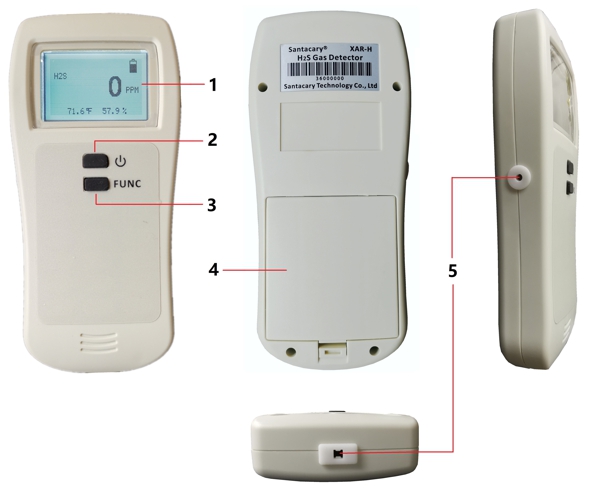
Calibration of Detector
This detector can implement span calibration when needed. Below is the guideline.
1. Calibrate the detector at least once every 180 days depending on the use and sensor exposure to poisons and contaminants.
2. Calibrate the detector if the ambient gas display varies at startup.
3. Calibrate only in a clean atmosphere, which is free of H2S gas.
Calibration Menu
Menu Items | Functional Description |
Fresh Air Calibration 0 PPM H2S | The XAR-H will perform an automatic fresh air adjustment (to zero the sensor). If the fresh air adjustment is successful, the unit will proceed to Normal Display |
H2S Span Calibration 25 PPM | To implement the span calibration with 25 PPM H2S gas. If the span calibration is successful, the unit will proceed to Normal Display |
Factory Reset | To restore factory settings. One press to restore factory setting, free from the bother of mis-operation |
Exit | Exit the Menu and proceed to Normal Display |
Alarm
Low Alarm and High Alarm
XAR-H has two alarm set points: High Alarm (H2S: 15 PPM) and Low Alarm (H2S: 10 PPM).These set points are factory set and cannot be changed. XAR-H is equipped with audio alarms to alert you when the ambient gas concentration exceeds one of the two alarm set points. When H2S value exceeds the defined high alarm set point (15 PPM), the audio alarm will sound at 3 beeps/sec. When H2S value exceeds the defined low alarm set point (10 PPM) but less than the defined high alarm set point (15 PPM), the audio alarm will sound at 2 beeps/sec.
Factory Alarm Set points
Gas | Low | High |
H2S | 10 PPM | 15 PPM |
Specifications
H2S Sensor Specification:
Measurement Range | 0 ~500 PPM |
Resolution | 1.0 PPM |
Repeatability | <±5% of signal |
Sample Method | Diffusion |
Temperature Range | -20 to 40°C (-4°F ~ 104°F) |
Humidity Range | 15 to 90%RH |
Response Time | <30 seconds |
Temperature Specification
Temperature Range | -10.0~60.0°C (14~140°F) display |
Display Resolution | 0.1°C (0.1°F) |
Display Options | °C/°F switchable |
Accuracy | ±0.5°C (±0.9°F) |
Response Time | 5~30 seconds (device must equilibrate with environment) |
RH Specification
Measurement Range | 0.0~99.9%RH |
Display Resolution | 1%RH |
Accuracy | ±4.5%RH |
Response Time | <8 seconds for 63% of step change |
General Specification
Operating | -10°C to40°C (14°F to 104°F),15~90% RH non-condensing |
Storage | -10°C to 60°C (14°F to 140°F),<99% RH non-condensing |
Power Supply | Four AA Alkaline Batteries |
Dimensions | 75x165x25mm (2.95x6.49x0.98”) |
Weight |
Hydrogen Sulfide Levels and Health Effects
Concentration (PPM) | Short Term Symptoms/Effects |
0.00011-0.00033 | Typical background concentrations |
0.01-1.5 | Odor threshold (when rotten egg smell is first noticeable to some.) |
Odor becomes more offensive at 3-5 ppm. Above 30 ppm, odor described as sweet or sickeningly sweet. | |
2-5 | Prolonged exposure may cause nausea, tearing of eyes, headaches or loss of sleep. |
Airway problems (bronchial constriction) in some asthma patients. | |
20 | Possible fatigue, loss of appetite, headache, irritability, poor memory, dizziness. |
50-100 | Slight conjunctivitis (eye irritation and redness). |
Respiratory tract irritation after 1 hour. | |
May cause digestive upset or loss of appetite. | |
100 | IDLH- Immediately Dangerous to Life and Health |
Leave area and get to your safety zone | |
Coughing, eye irritation, loss of sense of smell | |
Altered breathing, drowsiness after 15-30 minutes | |
Throat irritation after 1 hour | |
Gradual increase in severity of symptoms over several hours | |
Death may occur after 48 hours. | |
200-300 | Marked conjunctivitis and respiratory tract irritation after 1 hour |
Pulmonary edema (fluid in lungs) may occur from prolonged exposure | |
500-700 | Staggering, collapse in 5 minutes. Serious damage to the eyes in 30 minutes |
Death after 30-60 minutes. | |
700-1000 | Rapid unconsciousness, “knockdown” or immediate collapse within 1 to 2 breaths |
Breathing stops. | |
Death within minutes. | |
1000-2000 | Nearly instant death |
